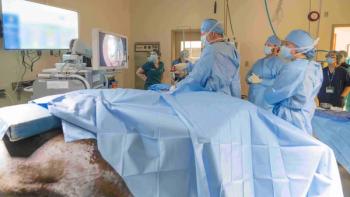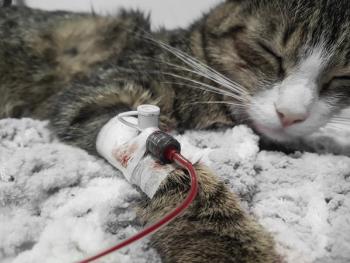
Anesthetists: Keep your cool monitoring temperature
Monitoring temperature in anesthetized patients on top of everything else you have to do might send your stress through the roof. But with these helpful tips, you wont have to sweat it.
Monitoring temperature can sure be ruff. Photo: Shutterstock/Sundays Photography As anesthetists, our goal is to provide our patients with an expert balance between the effects of anesthetic drugs (both wanted and unwanted), the effects of underlying illness and the intensity of procedural stimulation. To achieve this, we must depress the central nervous system sufficiently to keep our patients unaware and relaxed, immobile and pain-free while at the same time maintaining near normal cardiopulmonary function. Phew!
Hypothermia: Big problems
Overheating is a massive problem for patients underground or recovering from anesthesia. Here are some of the biggest reasons for that:
Problem 1: Release of catecholamines in response to the stress of a decreased body temperature
> Subsequent vasoconstriction, tachycardia and hypertension increase post-operative morbidity.
Problem 2: Coagulation deficiencies
> Hypothermia impairs platelet function, decreases coagulation pathways and increases fibrolysis.
Problem 3: Decreased wound healing
> Themoregulatory vasoconstriction reduces wound oxygen tension, impairs oxidative killing by neutrophils and reduces collagen deposition.
> Hypothermia directly impairs immune function and increases post-operative wound infections.
Problem 4: Reduction in necessary amount of inhalant
> Hypothermia increases solubility and decreases clearance, which leads to the significant potential for anesthetic overdose.
Problem 5: Hypothermia leads to post-operative shivering
> Shivering greatly increases metabolic oxygen consumption and when coupled with residual respiratory depression and atelectesis, hypoxemia is likely.
Of course, the potential for problems comes with this compromise to homeostasis. But the source for the most anesthetic complications? Human error (at a whopping 70% needs source), and those errors are often associated with poor patient monitoring.
The best way to counter this is constant vigilance of the anesthetized patient, allowing us to be proactive rather than reactive through anesthetic depth adjustment and need-based patient support. As our anesthetic drugs have become more refined and physiologic and our monitors more sophisticated, successful anesthesia is no longer defined as the lack of mortality, but the lack of morbidity. Our ultimate goal is to bring patients through the anesthesia experience without any ill effects.
The American College of Veterinary Anesthesia and Analgesia (ACVAA) recommends frequent and continuous monitoring of circulation, oxygenation, ventilation and-last but not least!-body temperature by trained personnel. Here are my go-to top tips for keeping your cool while monitoring temperature in anesthetized patients:
Taking the temperature
> Monitor intermittently via rectal thermometer or continuously via rectal/esophageal probe connected to a mechanical monitor. Place a reusable probe down the esophagus for an easy, accurate core body temperature reading.
Keeping warm
> Control conductive, convective, radiant and evaporative heat loss with supplemental heat support.
> Insulate with blankets and towels and minimize prep times.
Staying safe with warming devices
> Employ convective warming devices as an efficient way to maintain and improve body temperature under anesthesia.
> Skip rice socks, electric heating blankets and warm-water bags/bottles/gloves. They can cause burns. If you must use them, don't allow the heat source to contact the patient directly, and remove them once they cool to patient temperature; otherwise, they'll begin to absorb heat from the patient.
During times of compromised homeostasis as seen under anesthesia, the intelligent use of mechanical monitors will aid the clinician in supporting patients. Respecting the guidelines put forth by the ACVAA to continuously monitor circulation, oxygenation, ventilation and body temperature will improve the practice of anesthesia and reduce patient morbidity by providing positive anesthetic outcomes.
Kristen Cooley, BA, CVT, VTS (anesthesia) is an instructional specialist at The University of Wisconsin School of Veterinary Medicine and a consultant in Veterinary Anesthesia Support and Training.
Newsletter
From exam room tips to practice management insights, get trusted veterinary news delivered straight to your inbox—subscribe to dvm360.




